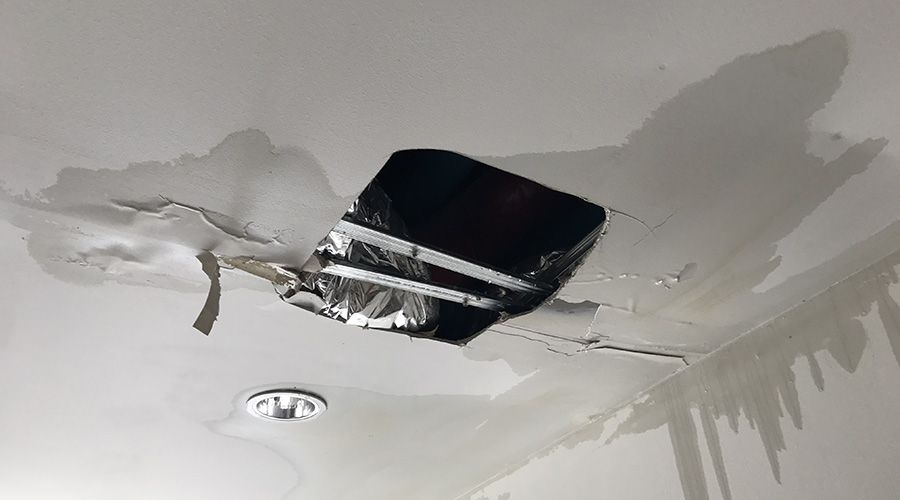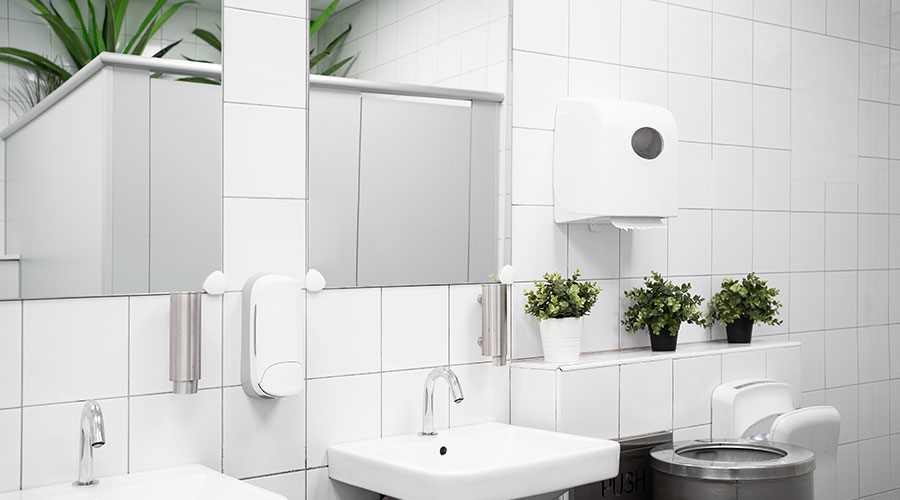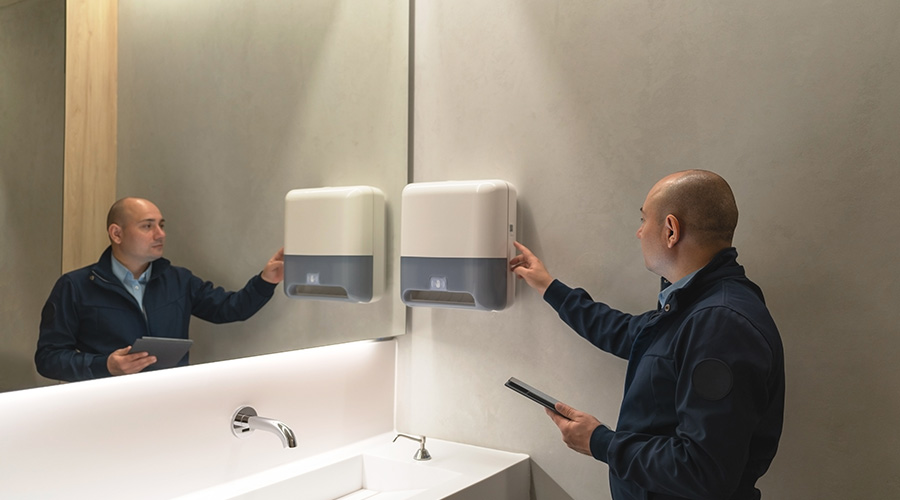Other Restroom Decisions Involve Sensors, No-Touch Devices, Lighting, Color
A host of issues are involved in restroom design decisions, including sensors on no-touch devices, stall design, color, and lighting. Hospitals and schools have additional restroom considerations.
In furnishing a restroom, no-touch fixtures are now the norm, Pickerel says, but facility managers have another choice to make — whether the sensors should run on batteries or direct wires. Changing batteries becomes another maintenance chore, but if something should go wrong with wiring, it is more expensive to fix.
In some new fixtures, Shockey says, the force of the water flushing the toilet also turns a generator that charges the fixture's battery. More and more, he says, the trend is for all-automatic restrooms where "no one has to touch anything."
However, the automatic flush sensors on toilets need to avoid a hair-trigger setting. Pickerel tells stories of "people walking by in the hall and all of a sudden, the toilets flush."
Pickerel points out that the new high-powered, blade-style hand dryers will collect water at the bottom and must be cleaned and disinfected regularly.
"The technology of hand dryers has come a long way," Shockey says, but they can be very loud, and with the hard surfaces necessary in a restroom, "not much can be done." A vestibule that separates the restroom from the hallway with another door can be a partial solution.
Indicators on stall doors that show red or green depending on whether the toilet is available make it more practical to install spring-loaded doors that remain closed, Shockey says. This is desirable as a row of closed doors looks better.
Ceiling-mounted stall partitions make for easier cleaning of floors, but if stalls in a high-end restroom extend up to the ceiling for more privacy, Shockey says, they will need "an incredible amount of ventilation," because "every single stall needs (its own fan), plus one for the open space." Also, it's important to be careful of sight lines, including mirrors, to make sure that the restroom isn't visible through the hall doorway.
Aside from finish and materials, an occupants' impression of a restroom can be improved through use of color and lighting. "You can do a lot of different things to make it look beautiful," Bechtol says. "Lighting is relatively cheap. It's a relatively inexpensive way to make a bathroom look really nice." Fixtures that are above touch level need not be as heavy-duty, but they still must be easily accessible to maintenance crews.
Hospitals, Schools
Pickerel, who specializes in healthcare facilities, says that in that field, "perception is a big thing. Everything needs to be well-thought out, easily accessible, and functional, because your perception of the care can be changed."
As hospitals and clinics prepare to handle heavier patients, Pickerel says that many facilities are switching to wider doors and to floor-mounted toilets. Even though wall-mounted units make cleaning easier, "they've made that sacrifice," Pickerel says. If a toilet breaks, "it's a lot more expensive to come in after the fact." Reinforced walls and grab bars also help that demographic.
In school settings, current design trends favor no doors and placing sinks near the hallway for effective supervision, according to Mel Green, facilities manager at Des Moines Public Schools. Bright lighting makes cleaning easier and improves appeal, he says, and "the more automatic devices, the better."
In elementary schools, lower sinks and toilets help the primary grades function better, and the current standard is for pre-K and kindergarten classrooms to have their own included bathrooms.
In Des Moines, floors of small tiles that were installed in the 1970s are being replaced with polished concrete, which are re-burnished two or three times a year, says Green. For maintenance, "we're arming our guys with the right tools," including more environmentally friendly products, he says.
"Kids are going to be kids," Green says, but he adds that teachers can educate them to take pride in the school and use facilities properly. Setting good expectations, he says, is sometimes "a little bit overlooked."
David Lewellen is a freelance writer who covers facility issues.
Related Topics:














